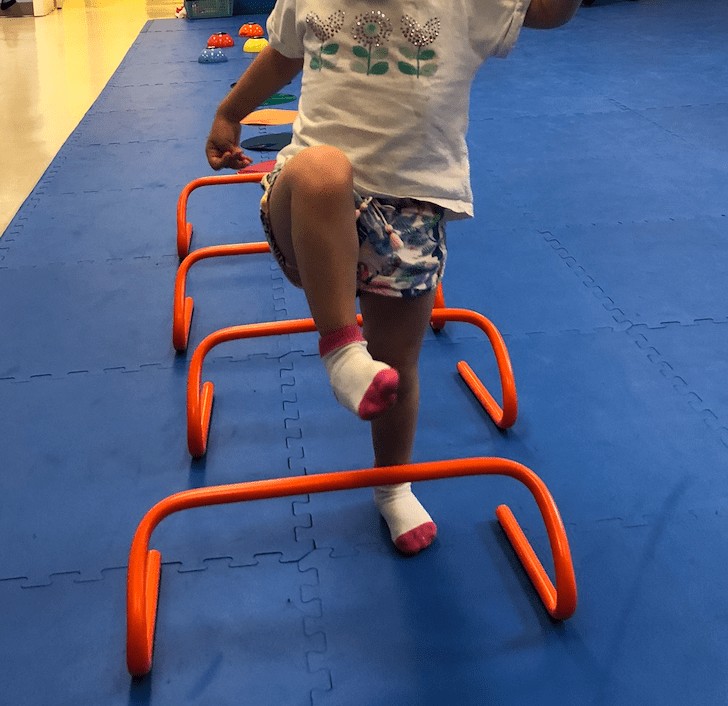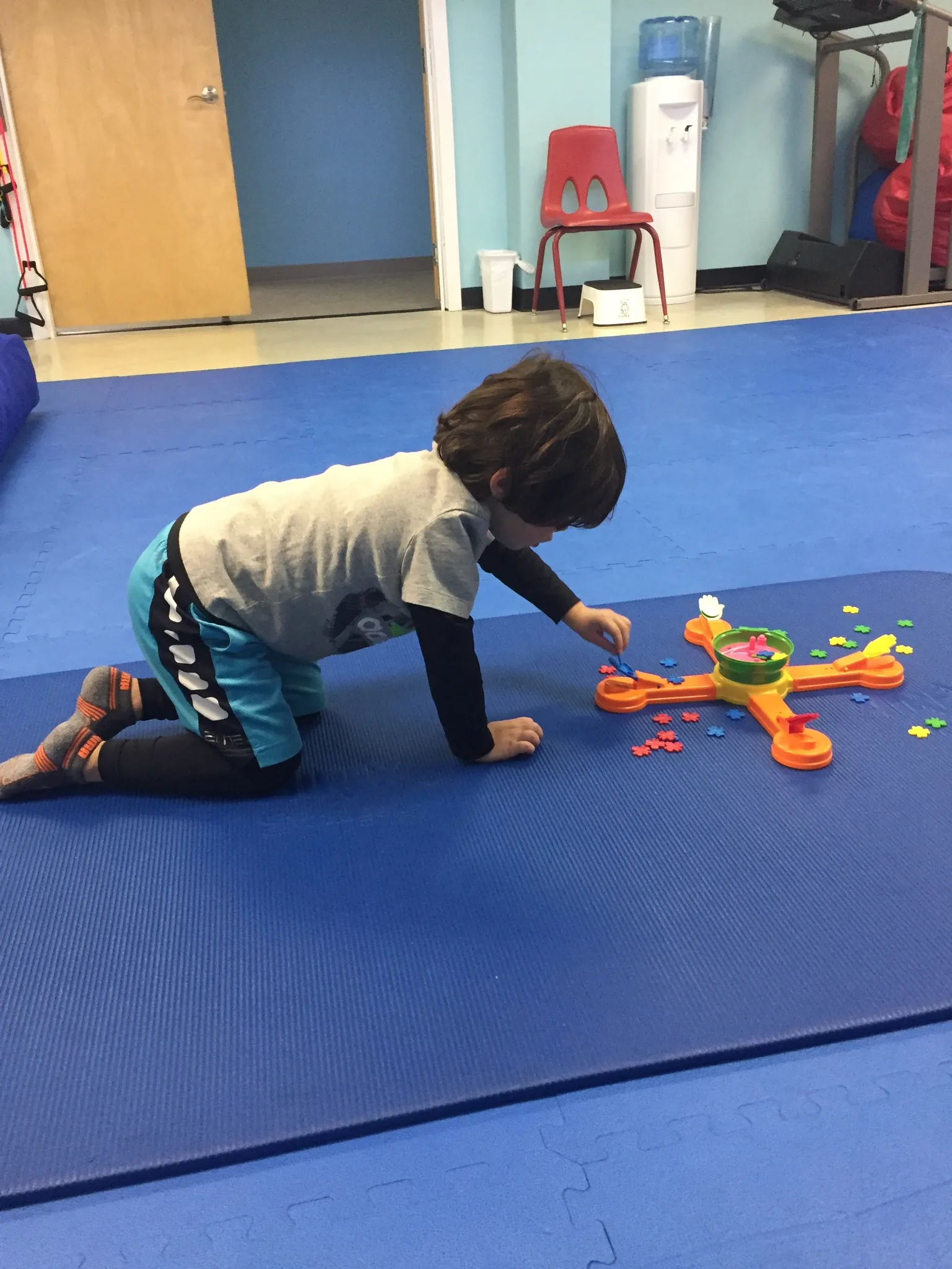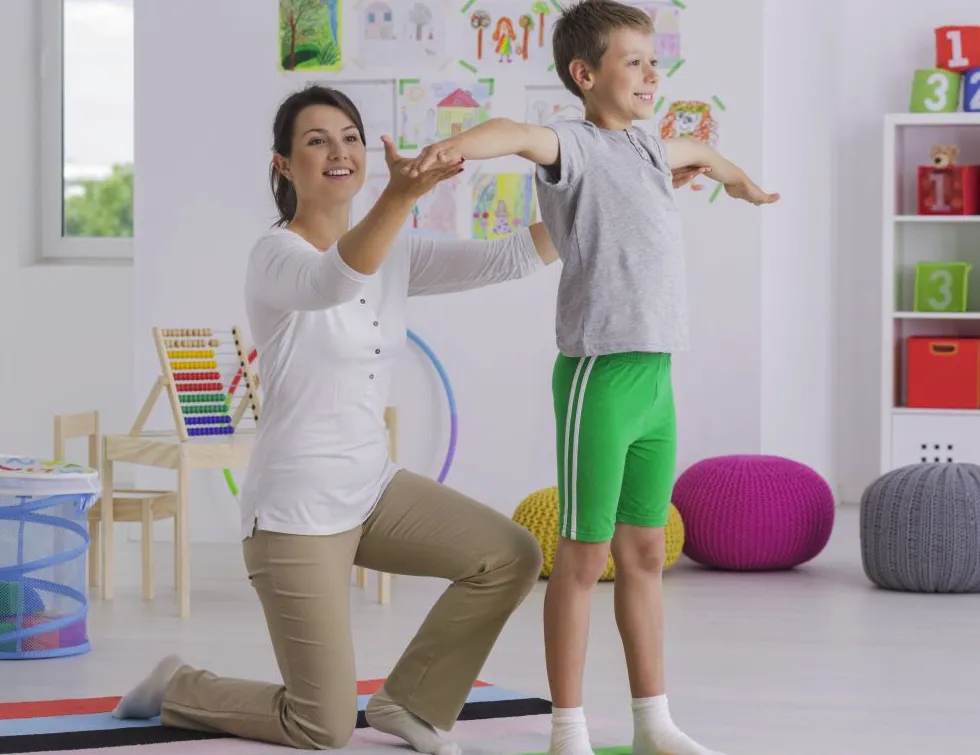TipToe Trouble: Overview of the Toe Walking Child
Why is my child walking on their toes?
There are many reasons a child may prefer walking on their toes, including a spontaneous habit with no explanation!
- Orthopedic: If a child has a leg-length discrepancy, scoliosis curve, or a birth history of club feet or hip dysplasia, they may be toe walking to seek symmetry and stability due to imbalances in the larger parts of their body. A child may also toe walk due to calf and ankle tightness, which can, in turn, cause the toe walking to increase in a chicken-and-egg cycle.
- Neurological: Toe walking is frequently seen in children with Cerebral Palsy, Autism, and Muscular Dystrophy. This is usually due to spasticity and imbalanced muscle contractions.
- Decreased trunk strength and postural stability: Locking the ankles in a flexed position is a common way for kids to seek stability in a joint when other parts of their body feel wobbly. Our center of mass is located just below our belly button, and if it is in constant motion due to decreased trunk and core strength, kids will often extend their knees and rise onto toes to seek stability elsewhere!
- Sensory Integration: Is your child also sensitive to clothing, picky with their eating, or hate being dirty? Many children with sensitivities to textures and different forms of input will walk on their toes to increase the joint input (proprioception) through the ankles and decrease the amount of their foot that has to feel the floor textures.
- Idiopathic: There may not be an exact science to why your child is walking on their toes! Focus on it’s impact on stair climbing, jumping, and falling or talk to a physical therapist to decide if further intervention is right for you and your child.
Pediatric Physical Therapy addresses all impairments above to approach your child’s toe walking habit with a whole-body approach!
Why is it bad that my child is walking on their toes?
If your child is walking on toes more than 50% of the time 6 months after first consistently walking, contact your pediatrician and a pediatric physical therapist to address the habit and its possible underlying cause! When left untreated, children can grow up to have leg or back pain as well as difficulty climbing stairs, riding a bike, jumping, and running.
What will Physical Therapy do for my toe walking child?
An initial physical therapy evaluation will consist of gathering information on your child’s medical and social history as well as assessing your child through play and manual techniques. As your physical therapist draws conclusions about the root cause of your child’s toe walking, they will educate you on various techniques and interventions that will be used to help improve your child’s gait. You will likely be provided resources and exercises for home. Read more about a typical Pediatric Physical Therapy appointment HERE.
Through therapeutic play and manual techniques, your child’s physical therapy appointments will address these impairments, and more:
- Ankle dorsiflexion and calf tightness
- Functional ankle motion: Squatting, jumping, single leg balance
- Movement analysis and intervention: Coordination, core strength, running and walking patterns, stair negotiation
- Shoe selection, bracing, orthotics
- Casting and orthopedic referrals as needed
Where can I receive Pediatric Physical Therapy services in Westchester County?
Developmental Steps provides physical therapy for children from birth to age eighteen. To encourage active participation in the home, school, and community, we offer comprehensive assessments that are followed by personalized treatments.
Our goal is to make each child feel happy and able to function and interact with others at an appropriate age. Each child is encouraged and challenged by our supportive, playful, and fun environment.
About the Author
Tamra Rutfield, PT, DPT has been a Physical Therapist since 2020, when she graduated from Northeastern University. She began working with adults in outpatient orthopedics, but quickly learned she was passionate for helping children develop gross motor skills that will shape their future. As a former gymnast, Tamra understands the importance of developing strength, flexibility, and coordination from an early age.







